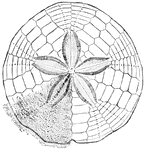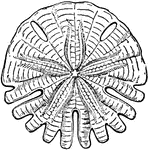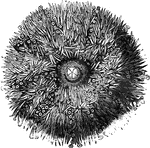Clipart tagged: ‘urchin’
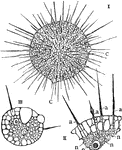
Actinosphærium
"1. The whole animal with c, c, contractile vacuoles 2. Portion of periphery more magnified with a,…

Psammechinus esculentus
"A common European type of the group is the species Psammechinus esculentus. In certain forms the test…
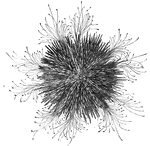
Sea Urchin
Sea urchin: the heavy projections are the spines; the long, slender ones are the tube feet.
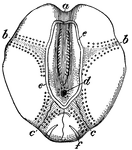
Sea Urchin - View from Above
Amphidotus cordatus or Echinocardium cordatum, commonly called a sea urchin, viewed from above. a, anterior…
